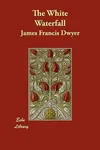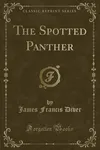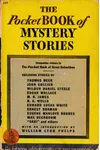Picture an Australian adventurer whose tales of exotic lands thrilled readers worldwide—meet James Francis Dwyer! Born in 1874, this prolific writer spun over 1,000 short stories and numerous novels, drawing from a life packed with travel, resilience, and a knack for storytelling. From a rocky start to literary success, Dwyer’s journey is as gripping as his adventure-packed pages.
The Making of James Francis Dwyer
Born in Camden Park, New South Wales, James Francis Dwyer grew up on a family farm, the fifth son of Irish immigrants. Educated in local schools until age 14, he moved to Sydney to work as a publisher’s clerk and later a postal assistant. A brush with the law in 1899 landed him a seven-year sentence for forgery, but prison sparked his writing career. With help from a fellow inmate and a guard, Dwyer’s poems and stories reached The Bulletin, igniting his passion for words. Released in 1902, he dove into journalism, freelancing for Sydney’s Truth and Sydney Sportsman under pseudonyms like Burglar Bill.
James Francis Dwyer’s Unforgettable Stories
Dwyer’s works pulse with adventure, mystery, and exotic locales, reflecting his travels across Europe, Asia, and North Africa. His 1912 novel, The White Waterfall, an Australian-set adventure, hooked readers with its vivid landscapes and daring escapades. The Spotted Panther (1913) earned praise from The New York Times for its thrilling narrative, blending lost-race intrigue with lush settings. His Spillane series, including The Lady with Feet of Gold (1937) and The City of Cobras (1938), delivered fast-paced detective tales. Published in pulps like Blue Book and Argosy, Dwyer’s stories captivated readers with their cinematic flair and global backdrops, cementing his status as a pulp fiction star.
His writing style, often compared to H. Rider Haggard, wove romance, danger, and cultural richness into accessible prose. Dwyer’s knack for immersive settings stemmed from his travels—think Timbuktu, the French Congo, and the Near East. His 1949 autobiography, Leg-Irons on Wings, candidly detailed his prison days and rise to fame, showcasing his reflective side.
Why James Francis Dwyer Matters
Dwyer’s impact lies in his trailblazing success as an Australian writer on the global stage. He was the first Australian-born author to reportedly become a millionaire through writing, proving local talent could shine internationally. His stories, blending adventure with cultural curiosity, inspired readers to dream of far-off lands. Though less known today, his influence lingers in the pulp fiction genre, where his vivid tales paved the way for modern adventure writers.
- Born: April 22, 1874, Camden Park, New South Wales
- Died: November 11, 1952, Pau, France
- Key Works: The White Waterfall, The Spotted Panther, The City of Cobras, Leg-Irons on Wings
- Fun Fact: Dwyer’s stories inspired early films like Graft (1915) and Bride of the Storm (1926).
Ready for a literary adventure? Snag The White Waterfall and dive into James Francis Dwyer’s thrilling world of exotic escapades!






